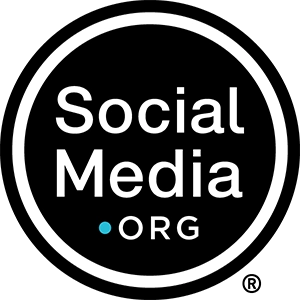Key takeaways:
- Strengthen internal alignment for crisis management: Maintain close alignment with internal stakeholders, including communicators, media relations teams, and executives, to ensure a coordinated response strategy during election years.
- Establish robust response protocols: Develop clear response matrices and plans for various scenarios, emphasizing the importance of identifying key stakeholders and ensuring they are informed about ongoing conversations and potential crises.
- Leverage listening and moderation tools: Utilize social media management tools and moderation features to streamline content management, automate processes, and effectively address sensitive issues to ensure your efforts are aligned with organizational goals during challenging times.
During election years, social media becomes increasingly tense due to contentious issues, making it critical to protect your brand reputation and monitor risks.
Heads of social media came together in our leadership panel on social media planning in an election year to share strategies for safeguarding your organization during an election year.
Discover how to navigate contentious social media landscapes and ensure your brand reputation is protected during critical times.
1. Strengthen Internal Alignment For Consistent Election Year Crisis Management
In times of uncertainty, internal alignment is crucial for maintaining unified efforts and consistent messaging.

[Executives] are going to be pressured on certain topics like trade and regulatory taxes. So, stay closely aligned with them and your global media relations team as they prep executives for those questions.
Sarah Rose Watkins, Global Media and Issues Management Manager at FedEx
Sarah Rose Watkins, Global Media and Issues Management Manager at FedEx, discussed the importance of staying closely aligned with internal communicators, global media relations, and executives.
“In FedEx’s case, they’re going to be getting requests for interviews and getting asked about time off to vote,” Sarah said. “They’re going to be pressured on certain topics like trade and regulatory taxes. So, stay closely aligned with them and your global media relations team as they prep executives for those questions.”
This strong partnership with your stakeholders helps safeguard your organization from tough questions and controversies that may arise, ensuring a coordinated response strategy.
2. Establish Robust Response Protocols

Know who the people in your organization are that you can reach out to, whether that’s risk management, security, employee relations, or patient relations in our case. Ensure that they’re abreast of the types of conversations happening.
Danielle Thompson, Social Media Manager Dartmouth Health
Preparing for the unexpected is essential in the world of social media. Danielle Thompson, Social Media Manager Dartmouth Health, highlighted the need for a response matrix and plan for various scenarios, drawing from experiences like the COVID-19 pandemic.
“We had to make sure that that process was identified, and that has continued to be valuable,” Danielle said. “Know who the people in your organization are that you can reach out to, whether that’s risk management, security, employee relations, or patient relations in our case. Ensure that they’re abreast of the types of conversations happening.”
Leverage Listening and Moderation Tools to Address Sensitive Issues During Election Season
Danielle also suggested leveraging available tools, such as Facebook moderation tools and social media management platforms like Sprout Social, to streamline content management and save time.
Automating processes, such as setting up inbox rules, allows for efficient handling of incoming content, ultimately maximizing productivity for social media teams.
By developing clear escalation procedures and roles within the organization, Danielle noted how social media leaders can streamline the process of addressing sensitive issues promptly and effectively.
3. Reinforce Social Media Guidelines and Policies Around the Election Year
The foundation of any successful social media strategy lies in clear guidelines and policies.

We communicate internally to remind our employees of the code of conduct and our principles of community that are especially relevant in the context of our public institution.
Sandra Phillips, Director of Content Strategy at UC San Diego Health
Sandra Phillips, Director of Content Strategy at UC San Diego Health, stressed the importance of reminding employees about social media guidelines and codes of conduct, particularly during election years.
“We communicate internally to remind our employees of the code of conduct and our principles of community that are especially relevant in the context of our public institution,” Sandra explained. “While we don’t control what people post because we’re a public institution, it’s crucial to remember that our patients and community are among the many audiences who interpret these posts.”
Regular internal communications and training sessions can reinforce these policies, ensuring that employees understand the potential impact of their online actions on the organization’s reputation.
Sandra added that by partnering with employee relations, UC San Diego Health maintains a collaborative approach to address potentially sensitive issues, safeguarding the organization’s marketing and brand reputation.

I would be cautious about [launching new campaign] in an election year. If something is loose, if you need to batten something down, do it now.
John Nelson, Vice President of Communications at Kaiser Permanente
4. Navigate Policy Changes in Election Years with Strategic Timing
Timing is everything, especially in the volatile platform landscape of an election year.
John Nelson, Vice President of Communications at Kaiser Permanente, advised against making significant policy changes as we get close to election day, as they may be perceived as politically motivated.
“I would be cautious about doing that in an election year,” John said. “If something is loose, if you need to batten something down, do it now. Announcing a new policy or approach to social media management, how your brand expresses itself, or what you expect employees to do in September or October of an election year is going to be perceived by many people.”
He noted that social media leaders should reinforce existing policies well before major political events to ensure they are fresh in employees’ minds, which helps avoid implementing significant changes during sensitive times.
5. Manage Potential Crises with Proactive Monitoring and Responses
Danielle at Dartmouth Health explained how proactive monitoring is critical to managing potential crises in a world where information spreads rapidly.

Using the tools has been important. But even more important is ensuring that you have a community management process in place that is constantly looking at what’s coming into your inbox.
Danielle Thompson, Social Media Manager Dartmouth Health
She talked about the importance of utilizing tools and robust community management processes.
“Using the tools has been important,” Danielle said. “But even more important is ensuring that you have a community management process in place that is constantly looking at what’s coming into your inbox.”
It’s also helpful to hide comments rather than immediately blocking individuals, as Danielle noted. She said this allows for better visibility into ongoing conversations and mitigates the risk of escalating aggression.
By having these strategies in place beforehand, your social media team can adjust their responses on the fly and maintain control over the narrative.
Danielle also suggested adjusting paid social media campaigns during tumultuous times, as increased online activity may lead to a higher prevalence of troll comments and negative interactions.
This proactive approach ensures that your social media efforts align with broader organizational goals, even in challenging circumstances.
6. Collaborate with Stakeholder for Effective Risk Management
In times of crisis, collaboration is essential for effective risk management.
Sandra at UC San Diego Health discussed the importance of flagging issues to relevant internal stakeholders, such as HR and legal teams.
She explained her organization’s structured approach for handling sensitive issues, particularly concerning patient experiences. She noted how her team established protocols for reporting and escalating issues.
“If something comes up that would be potentially flagged, we pass it on,” Sandra said. “It’s up to other people in the institution to help manage these things. Thankfully, it’s not reliant on the social media strategists to manage everything because that would be a big lift for that person.”
Sarah discussed a similar approach at FedEx and highlighted the importance of flagging issues to HR and the legal team for appropriate handling.
In addition to internal protocols, Sarah underscored the significance of social listening and media monitoring.
“We need to focus on social listening and focus on the media and let our executives know what is catching wind,” Sarah said.
She added that this proactive approach allows teams to stay focused on their responsibilities while keeping a pulse on the political discourse on different platforms.
Get More Social Media Leadership Insights on How to Safeguard Your Organization During Election Year
Discover more insights on how heads of social media at the nation’s largest hospitals are preparing for this election season and safeguarding their organization.
SocialMedia.org Health members meet weekly in our community to benchmark their strategies on how to establish employee guidelines and monitor risks on your channels.
Learn how membership can help you prepare for this critical time.


